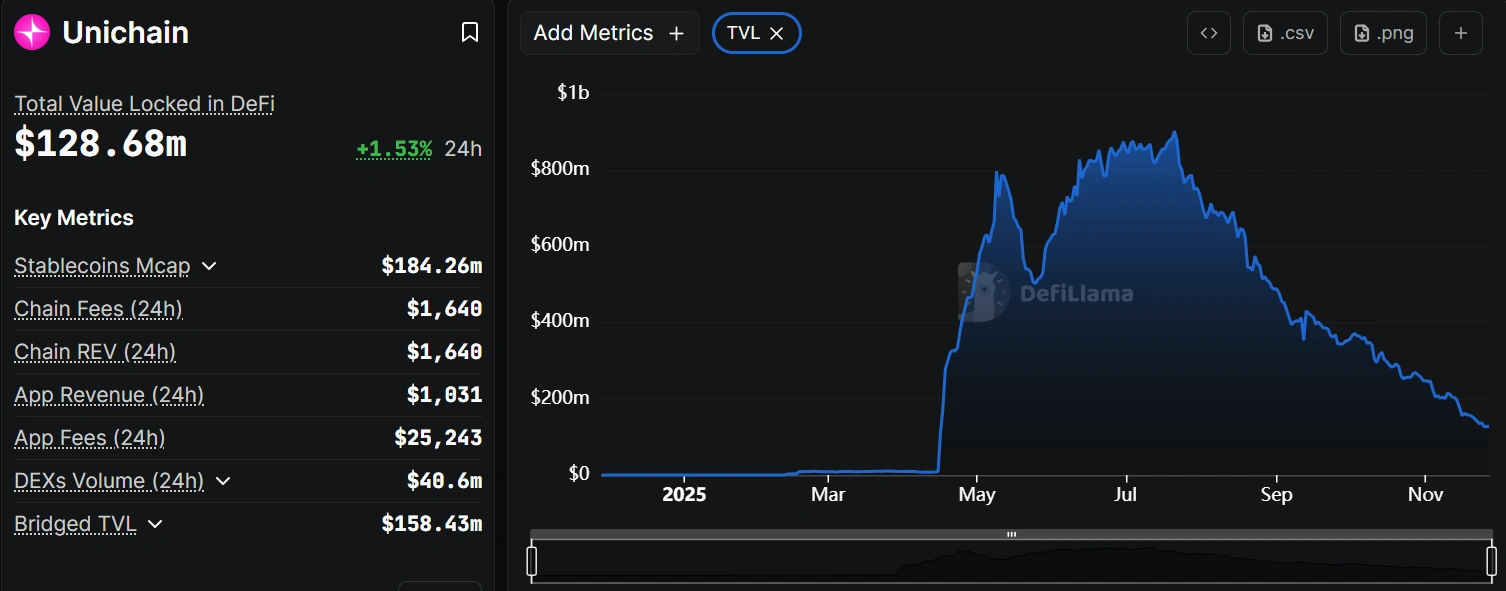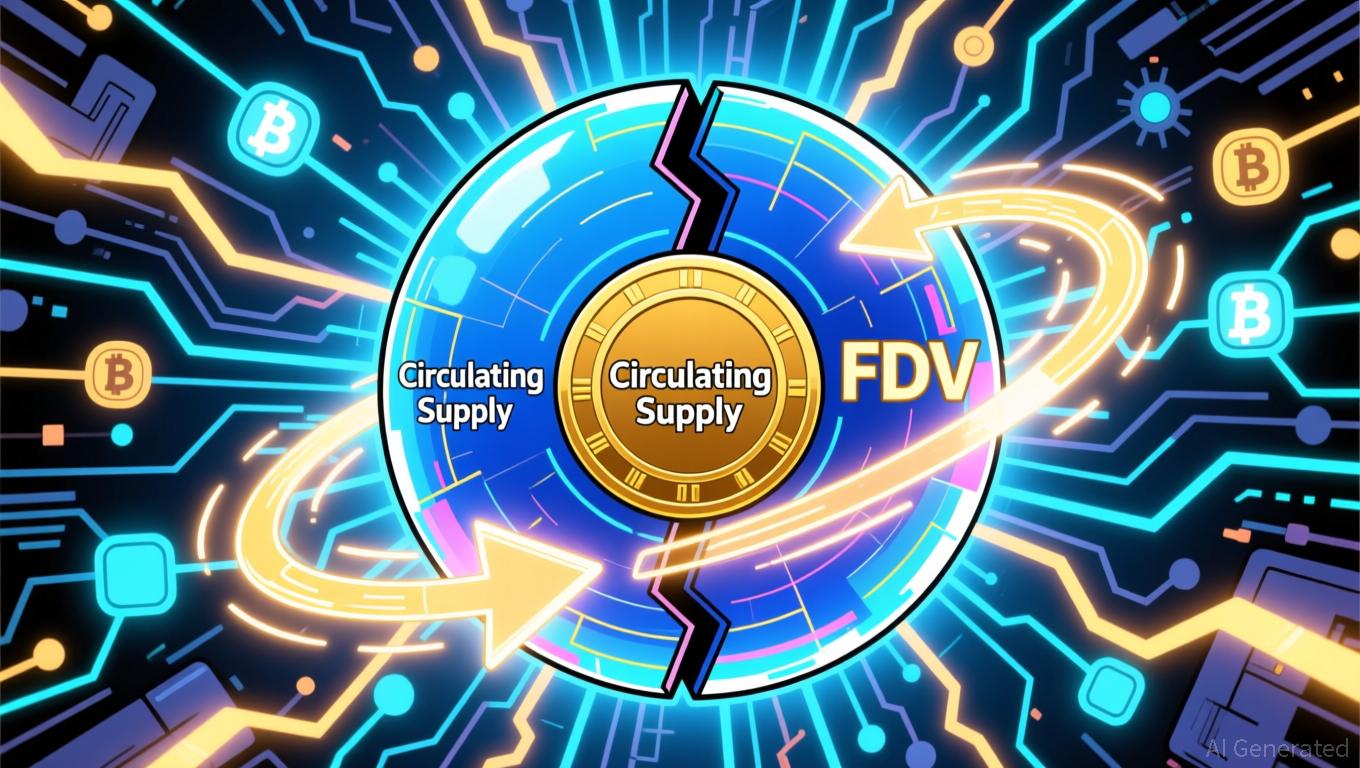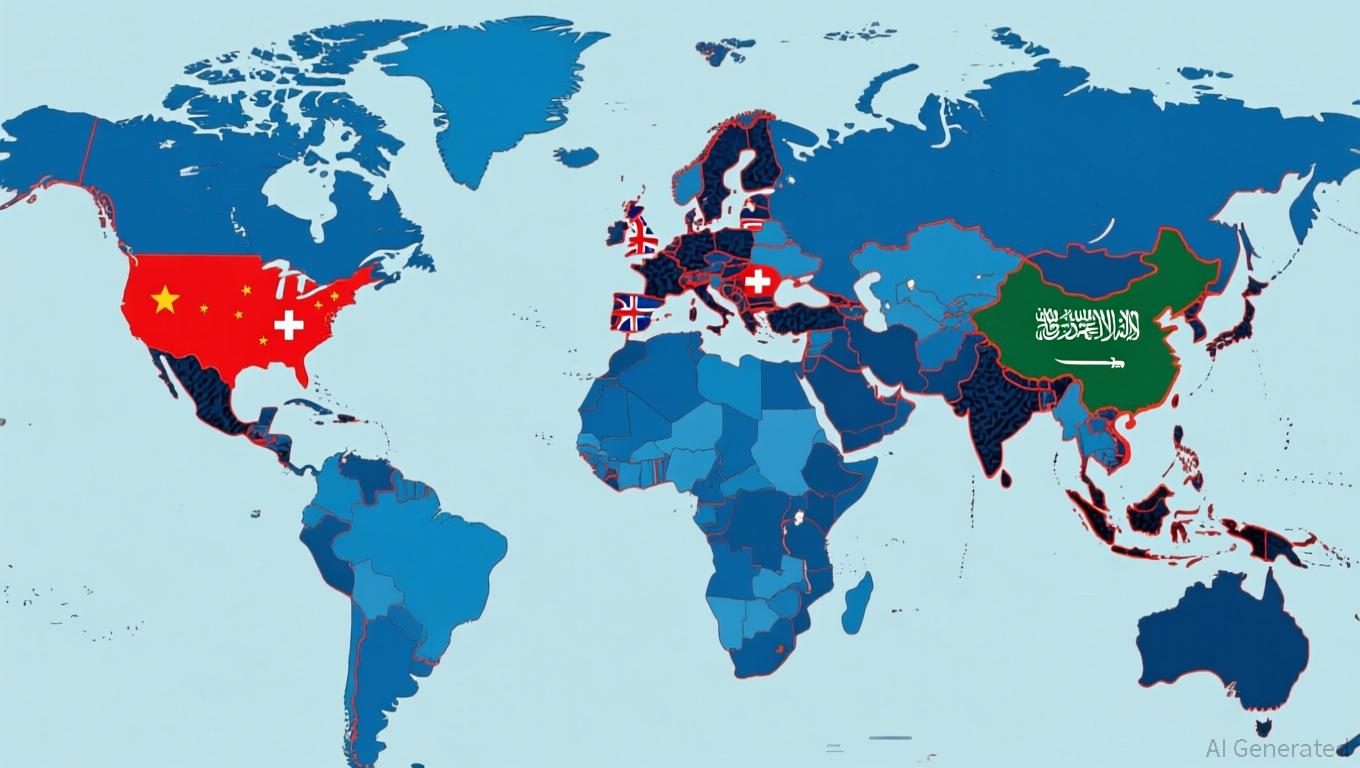Unichain TVL collapses 86% as incentive program ends and liquidity exits
Unichain’s total value locked (TVL) has fallen by 86% from its all-time high (ATH), with observers attributing the decline to the end of its incentive program and a lack of a moat to mitigate the impact of ending such program.
Tom Wan, head of data at Entropy Advisors, who shared the Defillama chart showing the decline, also revealed that Unichain’s TVL crash is not happening in isolation, with other networks such as Linea dropping by 83% and Berachain experiencing a 91% decline from their respective peaks.
Unichain, the Layer 2 blockchain developed by decentralized exchange giant Uniswap, spent over $21 million on a campaign that started in April 2025 and was managed by Gauntlet, which distributed approximately 3.5 million UNI tokens.
The campaign saw Unichain’s TVL surge astronomically. A sizable chunk of that growth has now evaporated.

Sustainable yields versus temporary incentives
Erick Pinos, Head of Ecosystem at Nibiru Chain, noted that “incentives are very tricky to get correct” in response to Wan’s initial post.
Wan responded to Pinos, writing, “100%, I like how we at Entropy Advisors are designing DRIP on Arbitrum, which supports the program to be very reflexive to market conditions, dynamics, and performance of participating protocols and assets.”
An X user posting under the name Soleil also assessed Unichain’s predicament, writing, “Killer apps and sustainable yields are the only two elements that can keep TVLs. For Unichain, the app is basically Uniswap. When the incentives end, LPs have alternative choices in various DeFi protocols to maximize their ROI, the moat is simply not there.”
Unlike established Layer 2 networks that have cultivated diverse ecosystems of applications, Unichain’s primary draw remains its connection to Uniswap itself. Without compelling reasons to maintain capital on the network beyond incentive farming, liquidity providers have simply redeployed their assets to more lucrative opportunities elsewhere.
Eliezer Ndinga, global head of research and founding venture partner, 21shares, writing in his comment to Wan’s post, also echoed this sentiment: “Crypto in reality has a product-market fit problem without those incentives. Those then become table stakes. Protocols have so much to learn from Web 2 bootstrapping founders.”
What’s next for Unichain and the blockchain market?
Unichain is not lacking technically, as it still offers fast finality and low fees, properties that should, in principle, support sustained usage and make it appealing to builders. However, the data is saying that’s not happening at scale, and the challenge, according to observers, lies in converting transient reward-seekers into regular users of on-chain applications.
On other chains, Berachain, whose platform experienced an exploit earlier this month, is the worst hit in terms of its TVL decline. It went from an all-time high of over $3.3 billion to $273.67 million, a 91.7% decline.
Linea, on the other hand, has seen a slight recovery, moving from the 83% decline Wan reported to around 78.9% as of the time of writing.
The reasons for these declines are not unrelated to the bear market that hit the market, with Bitcoin falling close to $80,000 last week. However, the market has seen some progress with Bitcoin gaining some momentum and is now priced at over $91,000. Historically, events like this affect other blockchains, whether Layer 1 or Layer 2, and recovery may be slow and difficult.
Disclaimer: The content of this article solely reflects the author's opinion and does not represent the platform in any capacity. This article is not intended to serve as a reference for making investment decisions.
You may also like
Monero’s reputation for privacy faces challenges from modular competitors and evolving regulations
- Monero (XMR) nears $400 as privacy-focused crypto gains traction amid evolving market demands for modular solutions. - Emerging rivals like Solana's GhostwareOS and Zcash challenge Monero's dominance with interoperable privacy features. - Regulatory pressures, including South Korea's expanded AML rules, heighten scrutiny on privacy coins despite their anti-surveillance design. - Analysts highlight Monero's "extreme privacy" legacy but note growing adoption of integrated privacy tools in active blockchain

As Crypto Markets Fluctuate, BI DeFi's Eco-Friendly Cloud Approach Draws Growing Attention from Institutions
- BI DeFi launches a blockchain-powered cloud computing platform combining renewable energy and advanced security to stabilize crypto market risks. - XRP's $180M inflow highlights growing institutional interest in digital assets despite broader market volatility and billions in sector outflows. - The platform's green energy data centers and automated yield settlements address ESG priorities while reducing blockchain's carbon footprint. - User-friendly features like $17 introductory contracts and $50K affil

FDV's Dilemma: Assessing Opportunity While Concealing Risk
- FDV (Fully Diluted Valuation) has become a 2025 key metric for evaluating crypto projects' long-term risks and scalability, especially for new layer-1 blockchains like Monad and Apertum. - Monad's $3.9B FDV despite 12% unlocked supply highlights "low float, high FDV" dynamics, while Apertum's 1.05x FDV-to-market cap ratio signals minimal dilution risk. - Critics note FDV's limitations, including price volatility assumptions and irrelevance for uncapped supply projects like Ethereum , requiring contextual

Switzerland Delays Crypto Information Exchange Pending International Coordination
- Switzerland delays crypto tax data sharing with foreign nations until 2027, citing unresolved CARF partner agreements. - The OECD's 2022 framework requires member states to exchange crypto account details, but 75 countries including the EU and UK face implementation challenges. - Transitional measures ease compliance burdens for Swiss crypto firms while awaiting finalized international data-sharing protocols. - Major economies like the U.S., China, and Saudi Arabia remain outside CARF due to non-complian

